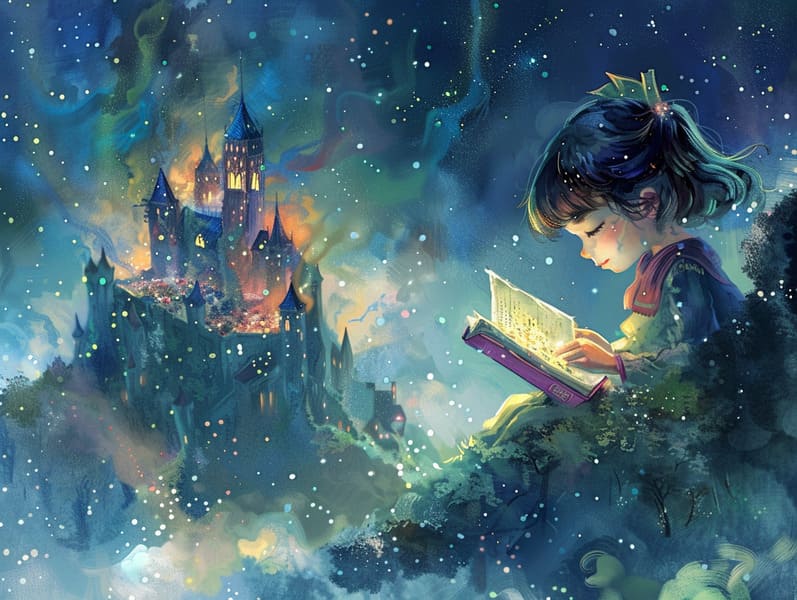A Brief History of Timeless Fairy Tales with Its Everlasting Delight.

Classic fairy tales have historical significance. These tales have been whispered from one generation to the next ages before they were ever written down. They emerged from a variety of traditions, including European traditions. They were initially shared among mature audiences, often carrying themes and messages mirroring the societal norms and beliefs of the time.
The Grimm brothers, Jacob and Wilhelm, were among the first to assemble many of these beloved stories. Their collection, "Grimm's Children's Stories," included tales like "The Little Glass Slipper," "The Story of Hansel and Gretel," and "Schneewittchen," which have since become hallmarks in the world of iconic fairy tales. Similarly, Hans Andersen's delightful fairy tales, such as "The Mermaid's Tale," and "The Story of the Ugly Duckling," have captivated hearts worldwide, cementing their place in the pantheon of beloved fairy tales.
Though they are old, these tales remain as applicable as ever, especially as children's bedtime stories. These charming stories are now available in different formats, including beautifully illustrated books, fantastical animations, and digital fairy tales.
Their lasting presence can be connected to several captivating elements:
Moral Lessons: Traditional fairy tales often present important moral lessons. Stories like "The Wolf and the Liar" teach the benefit of integrity, while "The Story of the Tortoise and the Hare" illustrate the virtues of perseverance and humility. These narratives offer children clear distinctions between good and bad, guiding their moral compass in a subtle yet impactful way.
Empathy and Understanding: Timeless fairy tales frequently portray heroines facing struggles and tests, fostering young listeners to feel with their struggles and back their triumphs. For instance, "Beauty and Her Beast" highlights the virtue of looking past the exterior to see the inner self of a soul, strengthening awareness and awareness.
Cultural Awareness: Many traditional fairy tales are saturated in the cultural contexts from which they blossomed. Exploring these tales can provide captivating looks into different societies, developing a sense of world insight and respect.
Inventiveness and Imagination: The fanciful elements in fairy tales—spells and potions—fuel children’s dreaming abilities. These narratives guide readers to fantasy realms, generating creative ideas and a sense of magic that remains a lifetime.
Timeless fairy tales are not only whimsical but also edifying. They provide alluring tools in strengthening various cognitive and affective skills in kids. When ancient here fairy tales are spoken out loud, they strengthen linguistic abilities by teaching new lexicon and complicated sentence structures. This practice also fosters hearing perception and attention span, as kids focus on every detail, excited to see what happens next.
Furthermore, discussing the themes and characters of ancient fairy tales can strengthen cognitive skills and problem-solving abilities. Young ones are educated to identify patterns, expect results, and get cause and effect. These debates also benefit children voice their thoughts and feelings, cultivating their emotional intelligence.
In today’s technological age, the availability of online fairy tales has made these stories more attainable than ever. Web platforms and apps present huge assortments of famous fairy tales that can be read or listened on anytime, anywhere. Fairy tales recited are particularly well-liked, sharing an charming way for young ones to take part in these enchanting tales. Audio stories and narrated videos transport characters and settings to life, often supported by charming musical scores and musical scores that intensify the narrative adventure.
The everlasting appeal of ancient fairy tales lies in their ability to adapt to contemporary times while staying true to their essential themes. Contemporary modernizations of these narratives often present more diverse characters and modern settings, making them accessible to today’s audience. However, the fundamental themes of valour, kindheartedness, and honesty remain unchanged, continuing to impact young readers of all ages.
Traditional fairy tales also offer a sense of security and homeliness. They deliver up a coherent narrative with a obvious beginning, middle, and end, often coming to a close with the solving of conflicts and the triumph of morality over immorality. This predictability can be consoling for kids, presenting a sense of unwaveringness in an unpredictable world.
Ancient fairy tales continue to bewitch and train new generations, maintaining their magic and significance in modern society. As kids' bedtime tales, they make available a perfect blend of charm and understanding, nourishing moral values, empathy, and creativity. The availability of free fairy tales online and the popularity of fairy tales read aloud validate that these traditional fairy tales remain acquirable to new generations.
By keeping and passing on these tales, we continue to celebrate the rich tapestry of tradition and cultural heritage. Whether you are accessing a gorgeously illustrated book, exploring a electronic library, or playing an sound book, the splendor of classic fairy tales is always within reach. These tales reveal of the steadfast power of narratives and its ability to unify us across time and space.
Be it you are browsing a gorgeously illustrated book, browsing a digital library, or listening through an audiobook, the attraction of bedtime fairy tales is always within reach.
These fairy tales point out of the steadfast impact of stories and its ability to unify us across centuries and lands, forming a connection that enchants and educates alike.